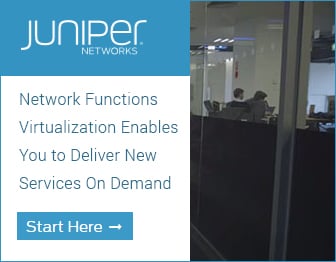NFV Essentials Week in Review: Amdocs, Ericsson, Google, Radisys
The departure of Ericsson’s CEO and Google’s embrace of CORD were probably the two biggest developments of the week related to network functions virtualization, and the larger movement to software-centric networks.
The move to software-centric networks is clearly shaking things up, and big changes at the largest communications infrastructure suppliers are among the signs of that sea change. For example, Ericsson this summer announced plans for a reorganization. And earlier this week the company made public news that its long-time CEO, Hans Vestberg, has left the company and a search is under way for his replacement.
Also this week, Google revealed that it has joined the CORD open source project under way at The Linux Foundation and the Open Networking Lab. What’s more, Google today in Sunnyvale, Calif., is hosting the first CORD Summit.
CORD stands for central office rearchitected as a data center. It refers to an approach of providing infrastructure-as-a-service and networking services as tenant applications for this infrastructure. This concept combines the cloud, commodity infrastructure, NFV, open building blocks, and SDN to bring the agility of the cloud and the economies of scale found in the data center to service provider networks – spanning from the equipment at the home or office customer premises, to the access part of the network, to the telco’s central office.
As I reported about a year ago at this time, key components of CORD include commodity hardware, NFVI orchestration (XOS, Openstack), an Open Leaf Spine Fabric, an SDN Control Plane (ONOS), simple on-premises customer premises equipment and virtualized CPE, virtualized access (PON OLT MAC + vOLT), virtualized BNG, and virtualized functions.
“CORD presents a revolutionary architecture that uniquely exploits the best of SDN, NFV, and cloud technologies, creating cutting-edge connectivity and cloud-scale services,” commented Brian Bronson, president and CEO of Radisys, which is a new member – along with Google and Samsung Electronics Corp. – of the CORD effort mentioned above.
NFV Essentials also this week reported that Amdocs is acting as the integrator for users of the AT&T ECOMP platform, software that helps developers and telecommunications firms expedite new service introduction based on network functions virtualization, open source, and software-defined networking technologies.
We also talked about how FusionLayer has new certifications on Hewlett-Packard Enterprise resources, including HPE’s NFV Infrastructure system.
“When run alongside HPE NFV-I and OpenStack Carrier Grade, FusionLayer Infinity allows CSPs to standardize release parameter provisioning for NFV regardless of whether the VNFs are deployed in traditional or software-defined networks,” explained FusionLayer CEO Juha Hoikkola
Also this week Sonus Networks announced that it has updated its Session Border Controller Software Edition. New now are built-in automation registration and configuration, among other enhancements.
Here’s a quick sampling of some other NFV-related news from this week:
- 6WIND announced general availability for its Mirantis certified 6WIND Virtual Accelerator Fuel Plugin. This is software that provides accelerated virtual switching and networking features for virtual infrastructures to enable NFV, data center virtualization, and network appliance virtualization on COTS servers.
- ADTRAN announced an open software defined access services architecture, called ADTRAN Mosaic, which was designed to enable rapid service creation and the delivery of business and residential broadband services at web scale.
- Serro has joined the OpenDaylight project.

 By
By 

